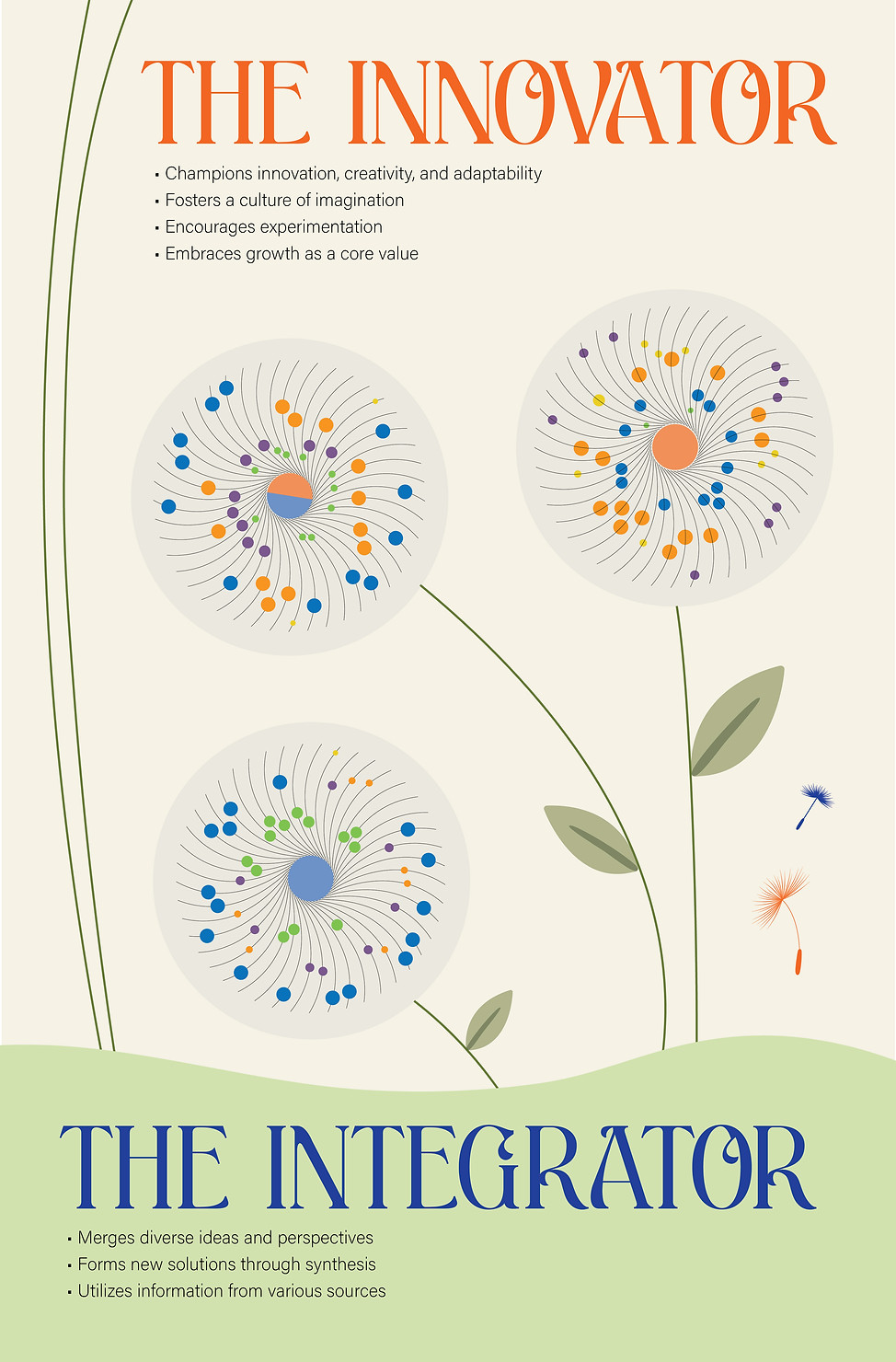MINDSCAPE:
EXPLORING
THE 5 MINDS
OF THE FUTURE
This interactive data visualization study delves into the development of five mental structures crucial for navigating future challenges: the Specialist Mind, the Innovator Mind, the Diplomat Mind, the Integrator Mind, and the Just Mind.
By conducting a survey with 45 participants, I aimed to uncover which of these mindsets people prioritize when confronted with specific life outcomes.

Exhibition Vision
Research: Inspiration
In my research, I embarked on a journey to explore the intersection of Giorgia Lupi's pioneering approach to humanizing data and Howard Gardner's seminal work in the book "Five Minds for the Future." This endeavor involved a thorough examination of Lupi's innovative data visualization techniques and Gardner's insightful delineation of essential cognitive frameworks. By synthesizing these perspectives, I endeavored to create a project that not only captures the essence of both experts' contributions but also offers a unique and deeply personal exploration of the dynamics of human cognition and visualization.
Gathering Data
The initial phase of this project involved gathering data through a carefully designed survey. To accomplish this, I created a Google Form questionnaire and distributed it for responses.


The questionnaire consisted of 10 questions, each offering 5 different answer options. Each answer option was designed to represent a specific cognitive approach to a given scenario. By analyzing the responses, I aimed to identify which cognitive approaches were most and least prevalent among the participants. This analysis provided insights into the diverse ways people think and approach problem-solving. Through the analysis of my responses, I discovered that people tend to use the Diplomat Mind the most and the Just Mind the least. Therefore, I will use these findings as the foundation for my narrative in the next step of the project, which involves visually telling this story.



Example of how I discovered the percentage for each question
Poster Design Concept Idea
Imagine each question as a dandelion flower, with 45 lines representing each participant's response. Within each line, a circle indicates the chosen answer, color-coded to represent one of the five minds.
The poster’s design draws inspiration from Gestalt theory. While you can view it as a cohesive unit, each component can stand alone and still convey its message. I'm aiming for it to transcend being merely an information board, presenting statistics and figures. Instead, I want it to provoke curiosity, inviting viewers to delve into the project's analysis independently. Thus, I encourage them to explore and decipher its insights firsthand.
.png)





.jpg)
